Last Chance to Catch NYC's Holiday Notalgia Train
We met the voices of the NYC subway on our nostalgia ride this weekend!

The original foundation walls of the Lovelace Tavern, dating back to the 17th century, can be seen through a glass window in the sidewalk at 85 Broad Street.

With its lofty skyscrapers and efficient street grid, it’s difficult to imagine what Manhattan might have looked in its early days. But if you look closely enough, you’ll find remnants of Dutch New Amsterdam hidden in plain sight. There’s the original street layout to look out for and many other early relics. One spot that might stop you in your tracks is the former site of the Lovelace Tavern, now a preserved display that looks like an archeological dig in the middle of the Financial District.
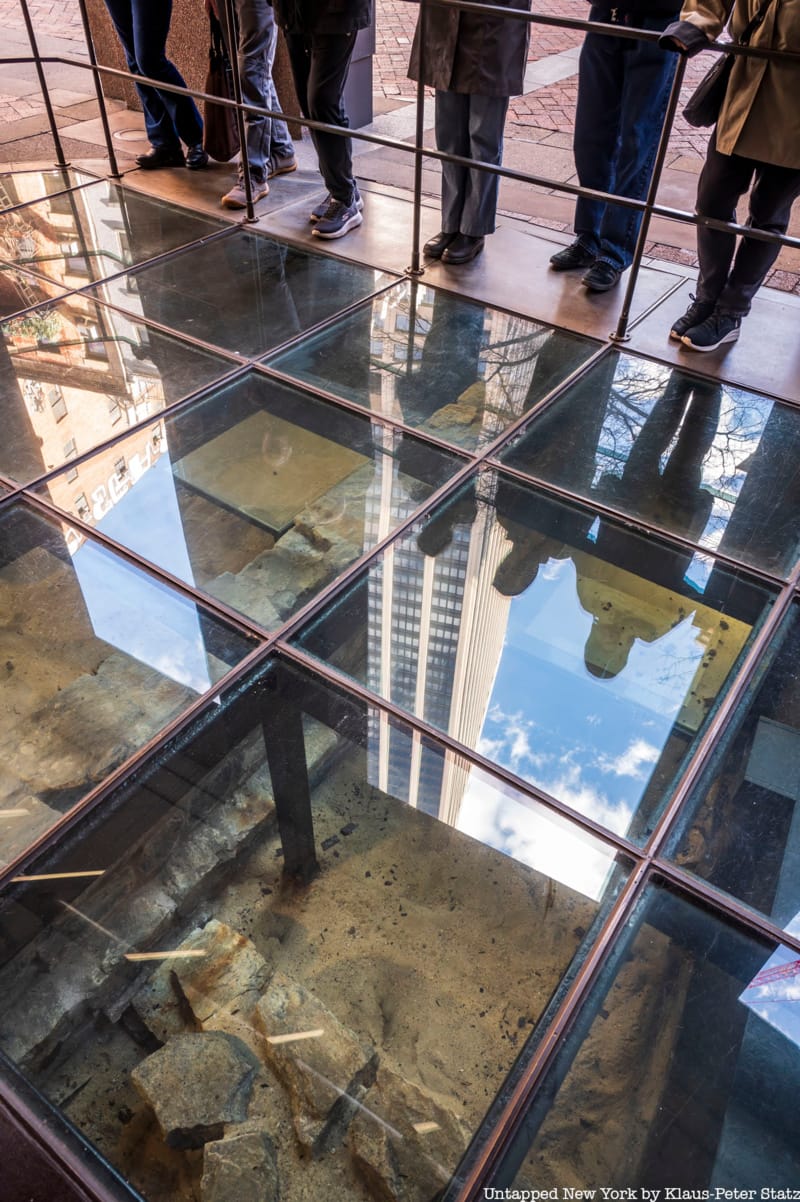
Governor Lovelace’s tavern (later called King’s Tavern) was located near what is now 85 Broad Street. The original foundation walls of the former bar can be seen through a glass window in the sidewalk, about 100 feet away from Fraunces Tavern. If you’re familiar with the neighborhood, you’ve most likely walked past it (or on top of it) without so much as a second glance.
The discovery of the remnants dates back to the 1970s. During that time, the Dollar Savings Bank—which had acquired the parcel of land at Broad and Pearl Streets—was in the midst of negotiating a a deal with a developer who was interested in the property. However, according to Unearthing Gotham: The Archeology of New York, the bank had to first reconstruct the original facade of the on-site building as part of an agreement with the Landmarks Preservation Commission.
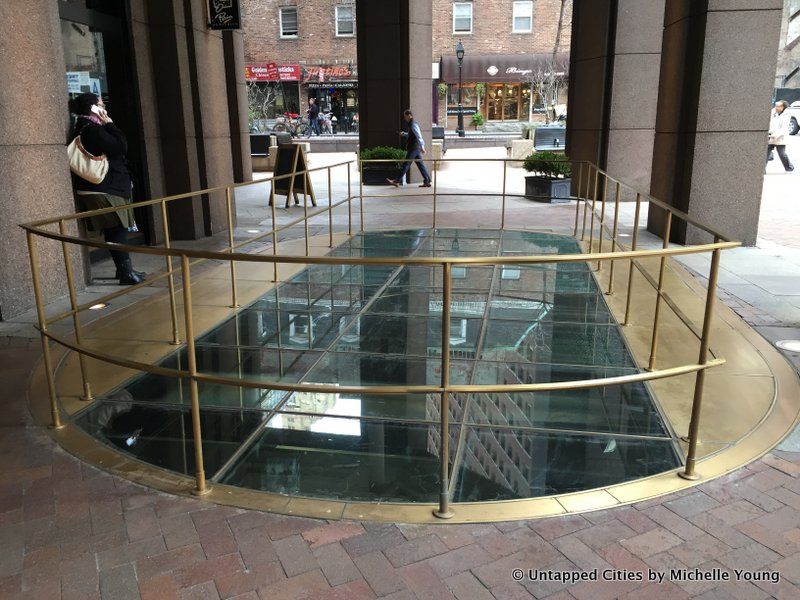
This proved to be an impossible task as parts of the facade were lost to time; thus, as an alternative means of preservation, the bank funded a full-fledged excavation of the site, which was believed to hold archaeological remains of Dutch New Amsterdam. The 1979 Stadt Huys Block project, as it came to be known, was one of the “most expensive urban archeological digs ever in America.”
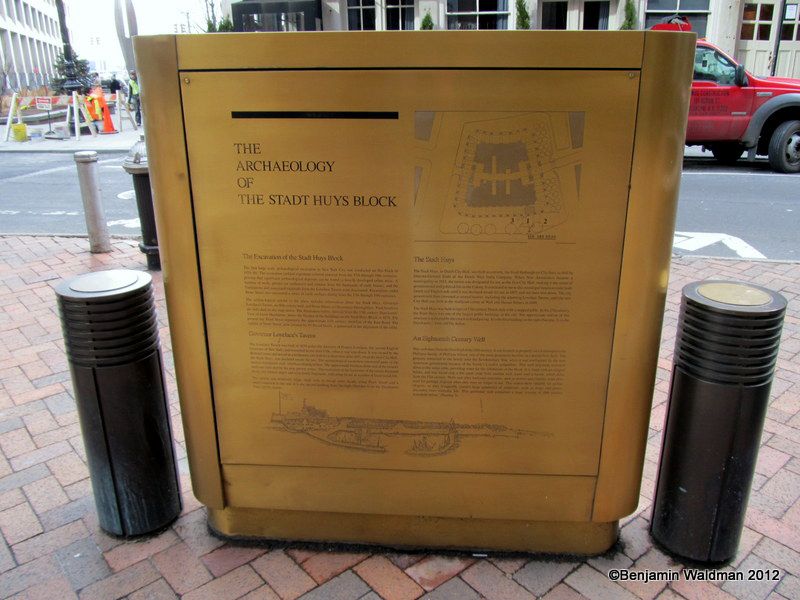
During the excavation process, archaeologists hoped to uncover Stadt Huys, the first city hall of New York. What the team came across instead was the next best thing: the foundation walls and burned floor-boards of the Lovelace Tavern, which had been constructed next to the municipal building. They also uncovered a range of artifacts, including bowls, plates, smoking pipes, animal remains and broken bottles—the photos of which you can see here.
As noted by the Archaeological Institute of America, the discovery paved the way for other excavations in lower Manhattan. A 1983 proposal to the Landmarks Preservation Commission eventually followed, which prompted the protection of the Dutch street grid—now a landmarked site. Along with a number of other areas south of Wall Street, the proposal highlighted “the property (on Broad Street) bounded on the eastern curb line of Whitehall Street, the southern curb line of Bridge Street, the western curb line of Broad Street, and the northern curb line of Bridge Street.”
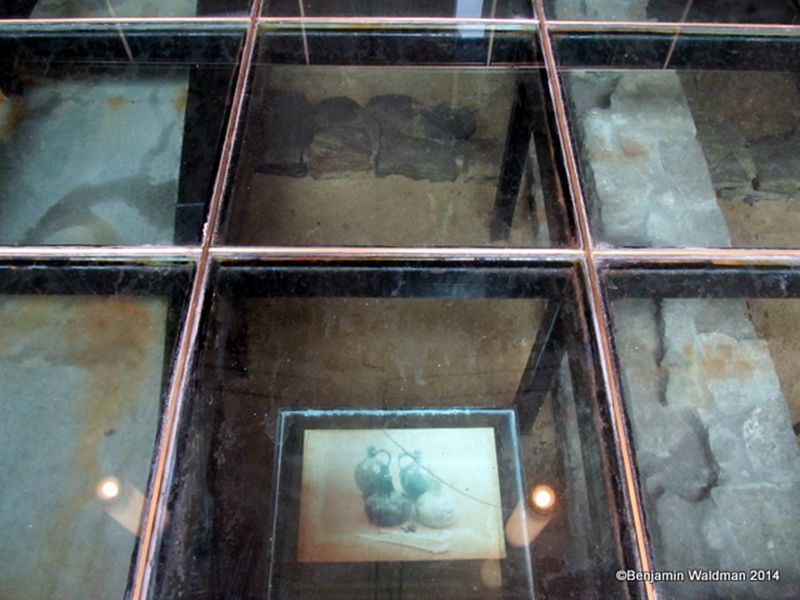
The discovery was also significant because the street plan provided “virtually” the only above-ground physical evidence in Manhattan of the Dutch presence in New York during the 17th century. Part of this can be attributed to a fire that consumed most of New York City’s downtown colonial architecture on December 16, 1835.
The Lovelace Tavern itself dates back roughly 350 years—Colonel Francis Lovelace, then the governor of New York, owned the building, which operated from 1670 until it burned down in 1706. During those early days, the topography of New York was obviously quite different. Where the Custom House is now was the original Dutch fort, and the Fraunces Tavern site served as the home to Stephanus van Cortlandt, the very first mayor of New York.
By 1697, the City Council of colonial New York deemed the Stadt Huys unfit for use, and government business was consequently carried out in the tavern. For the next few years, it functioned as a second city hall of sorts until a successor city hall was finally completed in 1700. Six years later, however, the tavern burned down, and the land was soon taken over by the growing merchant district.
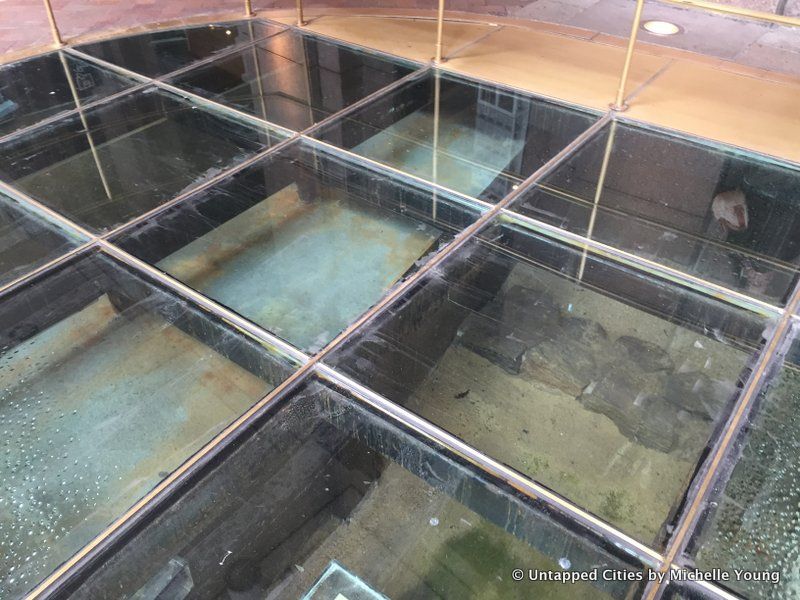

Today, 85 Broad Street houses a WeWork and a number of other tenants. It previously (and most notably) served as the headquarters of Goldman Sachs.
If you pass the area, take a moment to peer through the building’s ground window, cordoned off by brass railings. You’ll find the gray stone blocks in the sidewalk, which delineate the boundaries of the Lovelace Tavern, as well as lighter blocks that outline the walls of the Stadt Huys (as determined from 17th-century maps). Lesser known is the hallway in 85 Broad, which was built as a continuation of Stone Street, the city’s first paved road. A medallion of the Castello Plan is presented on each end of the stretch, showcasing how the Dutch Street grid extends through the hallway.
These remnants comprise just a portion of the relics you can see on our tour of Dutch New Amsterdam!
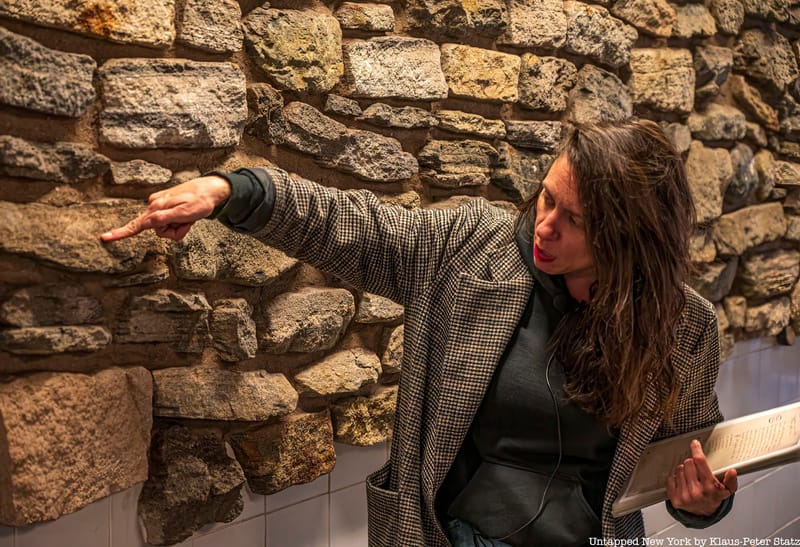
Trace the original street grid of Manhattan in 1667 and physically touch some of the oldest remnants of NYC like an 18th-century wall and the Bowling Green Fence!
Next, check out 10 Things the Dutch Introduced to NYC and America from Bowling to Santa Claus to Democracy and Residents of New Amsterdam Win Recognition from the Dutch Government in 1653.
Subscribe to our newsletter